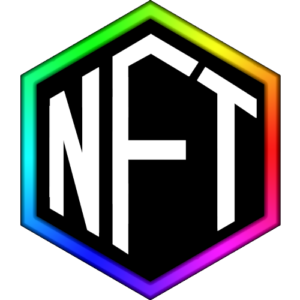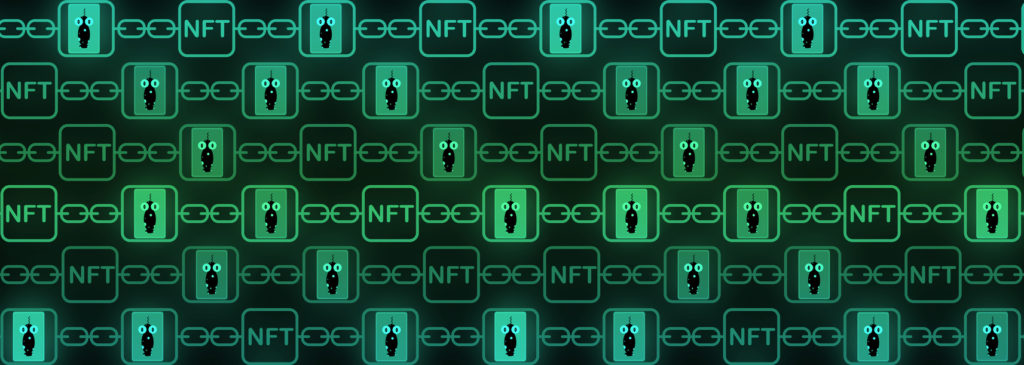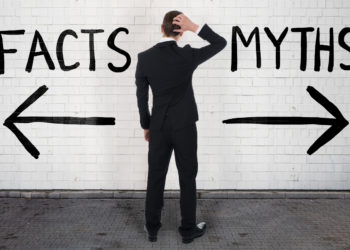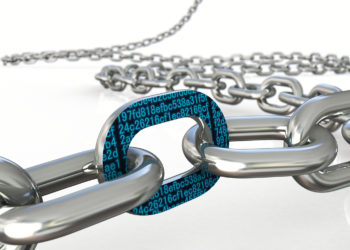For the past few months, there has been growing buzz about NFTs (Non-Fungible Tokens) and the various markets for art that have sprung up around using it. You might be wondering, isn’t this just a giant tech bubble built around people with too much money, who don’t seem to care about wasting it? You might be wondering whether NFTs are just the next big tech buzz word that’s driving all the hype? You might be wondering what the heck are NFTs anyway and why should I care? You probably should care and it probably will impact our community, but in ways we can’t yet understand fully.

Let’s start with what NFTs are and why is there so much buzz around them. The buzz is driven in large part by the explosion in the market of digital files associated with NFTs. Nothing draws our attention like money, particularly large sums of money. On March 11, Christies closed an auction on the third highest price paid for a living artist’s work, $69 million, plus another $10 million in commissions, for a work of digital art. This is important first because any art selling for nearly $80 million will catch people’s attention. The fact that this is digital art is notable, as most digital art hasn’t entered the traditional art market world because there hasn’t been a way to track provenance and therefore ownership. For an art object to retain value, it has to be tracked back to the creator in some fashion and it needs to be unique, or at least in limited supply. If there are hundreds of thousands of copies of an image on a postcard, that image itself isn’t valuable, but if you have the original copy of the same painting by van Gogh that is on those millions of postcards, that is likely to be immensely valuable. Digital files are — by definition — easily replicated and anyone can produce the files. As such, there hasn’t been a market for digital art and the world of digital content has shied away from sales and leaned more heavily on licenses.
But what are NFTs?At its core, this is simply a new branding of a blockchain technology system with some modifications. Rather than a network where the value each token in a currency system is the same, say with Bitcoin or Ethereum, the value of each NFT fluctuates independently. Furthermore, the NFT systems add some additional tweaks to the “smart contracts” behind the tokens to make the market more appealing to creators, particularly in its application. The Tokens in an NFT system are entries in a blockchain ledger system, which can be exchanged or sold like any other item noted in a ledger system. They are essentially digital identifiers for something of value. What you own isn’t the thing itself, only a representation of the thing, much like one might own a print of a photo, but not the copyright of the image.
To make an analogy in our scholarly ecosystem, imagine they are DOIs for some digital thing. Except instead of DOIs being shared out throughout the world, you can own this DOI and the thing that it represents, in a way. Each thing you want to sell has its own DOI and your possession of the DOI and, most importantly, that public registration in the ledger, certify your ownership of that digital thing. You can later sell that token to someone else, who then can claim ownership of that digital thing. The possession of the digital file itself isn’t necessarily meaningful since the digital file can be replicated by anyone. What is valuable is the registration of ownership, being able to prove you own it, and therefore possibility of transferring that ownership to another.

One thing that distinguishes the NFT marketplace from a traditional blockchain system is the addition of contract terms related to the sale of the tokens that provides a commission back to the originating artist every time the token is sold. In this way, the creators are paid a percentage of each subsequent transaction. It is an odd bastardization of the first-sale principle, which states that as a new owner of an object you are free to do with that object as you see fit. In this case, however, you need to constantly pay it back to the originator of the object each time the object is sold on to a new owner. You can see why the content creators are keen to jump on board with this new model.
There are analogies in the world of physical items though with regard to the atomization of copyrights. You may have purchased a photograph, but you don’t necessarily have the rights to redistribute that photo. You may have purchased a music songbook, but if you want to perform that music publicly for a fee, you may have to pay the songwriter for performance rights. Copyright is complex and people are constantly trying to make it even more so.
This entire structure sets up an interesting tension between the world of subscriptions and the world of ownership. In the world of subscriptions, a consumer never has permanent rights to a digital object. Possession is always temporary and constrained by contractual terms. You may have ‘purchased’ a file from Apple for a song using its iTunes service, but you don’t own it in a traditional sense. You can’t sell it to others, nor can you can bequeath your iTunes library to your best friend upon your death. If Apple lost the rights to distribute the content, it may well disappear from your collection. And if you wanted to move that library to another platform because Apple ceases to support it, you are out of luck. After a bit of stumbling out of the gate with digital content in the 1990s and early 2000s, many industries have embraced subscription licensing of digital content as a pathway to sustainable and growing income. Scholarly publishing was among the first to make this transition with its primary market of libraries, but soon music and now video have embraced subscriptions for mass market distribution of their content (although it should be noted this oftentimes is challenging the library market).
Libraries have attempted to exert their rights related to ownership and the associated rights related to copyright for decades, as providing the basis for library lending. There has been considerable back and forth about preservation rights and perpetual access within contracts. Over the past decade, the right to exchange copies among libraries, particularly for digital content has been a question of fierce debate and previous an ongoing litigation. As a community libraries have been firmly on the side of ownership and its associated rights. Content industries less so.
However, there is a $70 billion dollar industry that is interested in rights and passing those rights from one owner to another: the Art Market. To put this in scale, this is about 5 times the size of the global scholarly publishing marketplace and about half of the entire book publishing industry, with estimated annual revenues of $128 billion. Without the first sale principle and the (somewhat nettlesome) issue of provenance, the market for art would be difficult to maintain. This is why until 2021, the art world had not embraced digital content. But ownership is a powerful force and collectors feel that tug significantly. Consider that the NBA has sold more than $230 million on its TopShot platform since its launch in 2020 by collectors. This drove Christies to attempt a digital auction using NFTs, which in turn led to the sale of Beeple’s work for a shocking sum of real dollars.
The tension will play out in interesting ways in the coming years because, while some people are satisfied with rental and subscription markets for some goods, many may want to embrace the security of ownership. Granted, one may have to give up choice and access for longevity and ownership. Ownership comes with its own costs for the user, say at platforms move from one system to another. I hate to think of the number of times I paid for the same album on vinyl then tape, then on CD, and now as a streaming file. Today, as content is sometimes platform dependent, one has to purchase a new device to simply get access to files that they’ve purchased. (Thank you very much Audible!) But as long as I have a working CD player and an unscratched CD, I can still listen to it.
Some industries are likely to fight the new trends toward ownership and will continue to limit people’s rights associated with owner. Rather than return to a world where content is sold once, even at a higher price, it is likely many will not offer ‘traditional’ ownership rights at any price. One may assert it is their right to sell only what they want and to whom they want, with whatever restrictions they want. Why should a content owner sell you a thing, if they can limit your actions by licensing it and/or demanding monopolistic rents doing so for as long as you might want it? It is purely an economic maximization effort. Some content industries have pushed back hard, often via legal channels, against new technologies over the past several decades, because their existing models have suited them reasonably well to the point of the new technology being advanced. One need only look at the changes in the income streams for the music business over the past decade to see how trends in income have shifted significantly, from CDs to downloads, now to subscription-based services. Eventually, they have found a way to embrace the new technology, if begrudgingly, once they’ve identified ways to profit from it.
Consider this somewhat odd acquisition move earlier this month. On March 4, Square announced purchasing Tidal, the JayZ and Beyonce musical services. Why would a payment service be keen on entering the streaming music business? How are these two things related? When streaming pays so little and traditional big-label music contracts have historically had poor terms for artists, there is a burgeoning market for artists to move direct to consumers and benefit from sponsorship. According to the Motley Fool, “The idea is that whatever Square and Tidal decide to build will be focused on helping artists getting paid for their work.” One can easily imagine a world where NFT-like systems sponsored by Square and Tidal that provide music fans an opportunity to purchase special limited editions of music or other collector’s items as one component of this model. Tidal Founder, Jay-Z reiterated this in a press statement. “I said from the beginning that Tidal was about more than just streaming music…Artists deserve better tools to assist them in their creative journey.” One might envision the world of NFTs as being a way to effectively monetize, and continue to monetize on the resale market, this new digital form of ownership, albeit with strings attached. It is interesting timing that Jack Dorsey, who is CEO of Square and Founder of Twitter, put his first tweet up for auction using NFTs the day after the Tidal deal was announced.
Scholarly publishing, which is less focused on paying creators, might be less impacted than music or trade publishing by the adoption of NFTs, but the changes in one environment do impact the other. Ownership, proof of ownership, and proof of rights related to a particular object are of keen interest within the library community. As these communities move increasingly digital and transferring digital files within the network becomes increasingly prevalent, systems that incorporate the rights associated with ownership of those digital files becomes more important. We see this appearing in the conversations around controlled digital lending and the circulation of digital content. A key concern among the publishing community has been the lack of friction in circulating digital content, which led in 2019 to the battle between Macmillan and the library community around the right to access and purchase current new ebook titles. Without getting into the specifics of the Macmillan situation, one view of this situation is as an attempt to control what a library can do with the content that they purchase and the rights that libraries have when they purchase content. NFTs might be a solution to address this complex issue.
The world of NFTs is certainly not without its problems. Notably, the prominent NFT marketplaces getting the most attention, like Nifty Gateway and SuperRare, are based on the Ethereum token system, which is particularly energy intensive for a variety of reasons I’ll spare you. It has been estimated that each Ethereum transaction’s energy footprint is 48.14 kWh. This is equivalent to the power consumption of an average U.S. household almost two days. The power consumption required to move even a fraction of the transactions that take place at something like the Art Basel art fair would be equivalent to the power consumed by a small state or country. Technology probably will find a way around the power problem, either through better blockchain management strategies or less carbon-emitting electricity. In fact, Etherum is preparing a new version release that could address this issue in part. Whether the entire process is a good use of the world’s power, we’ll leave to another day.
While it may well be a short-term bubble, it is quite likely that NFTs and blockchain technologies related to ownership and transfer of intellectual property are going to be here to stay. That isn’t because blockchains or NFTs are the inevitable technological solution. More fundamentally, it is because people want to own things, and this extends to the digital world too. What happens after the inevitably early-stage crash, though is anyone’s guess. Although the desire to claim ownership over things is a deeply rooted human emotion that will overpower the intangibility of digital content.
Discussion
7 Thoughts on "NFT Technology versus Subscriptions – The Battle for Ownership of Digital Content"
Your “Scholarly publishing” paragraph appears to end mid-sentence?
The fundamental problem here is not the existence of records of ownership or provenance, but who do we trust to keep those records? Blockchain solutions are not fundamentally better than a simple database for recording information; the claim is they are better for keeping persistent records but there are surely other solutions for that (LOCKSS for instance?) which don’t have the downsides. And blockchain is pretty new, how do we know they will persist? Some “coin” offerings have already failed one way or another. Maybe widespread quantum computing will wipe out their cryptographic security in the near future? I think scholarly publishers would be wise to be very cautious here.
I don’t know where that paragraph disappeared to in the original post. It’s been corrected and replaced.
The key difference between a simple data structure of the blockchain system is that records in the blockchain is that each record includes a hash calculation of each previous record. Because of this, any change in any previous record will change the value for records. In this way, there isn’t a way to “go back and change” a historical record, without changing every subsequent transaction record. This is part of the reason the system is so resource intensive.
Yes, systems can fail and that is an issue in every technological system. At its most basic level, if any organization fails to ‘pay its rent’, it could lose its interest presence and ‘go away’ online.
TBC – I’m less interested in the technology application itself and the tension between those that are interested in either side of the battle around ownership, less the technology that ‘enforces’ that structure.
Thank you for bringing a new concept forward. This is very intriguing and provocative. Thinking from a library perspective would loaning materials be considered a temporary change of ownership so therefore the creator should get “paid” and how would that be tracked..?? As libraries go digital we are concerned about perpetual access and ownership.
Thanks Todd. NFT is definitely a fascinating experiment for content producer. Just in case the examples you’ve listed are not amusing or astonishing enough to your readers, do you want to spend 92869.38 US dollars to own a pair of NFT socks(yes, the type of socks you are thinking of), virtually? and you indeed can redeem it into a pair of real socks, though you won’t be able to resale it as NFT for the same price. check here: https://unisocks.exchange/
A Taiwanese Youtube influencer has purchased 10 pairs of these socks when they were launched, with very cheap price of course. Before you try to calculate how much he earned from this investment, I have to tell you that he redeemed all the 10 pairs into real socks!
If you are interested in reading further about the drawbacks of NFTs, I recommend this read: https://everestpipkin.medium.com/but-the-environmental-issues-with-cryptoart-1128ef72e6a3
I agree with the author on many points, in particular on the topic of environmental damage, and with the idea that this embodies the lost opportunity of democratisation of knowledge and culture the digital age seemed to bring.



